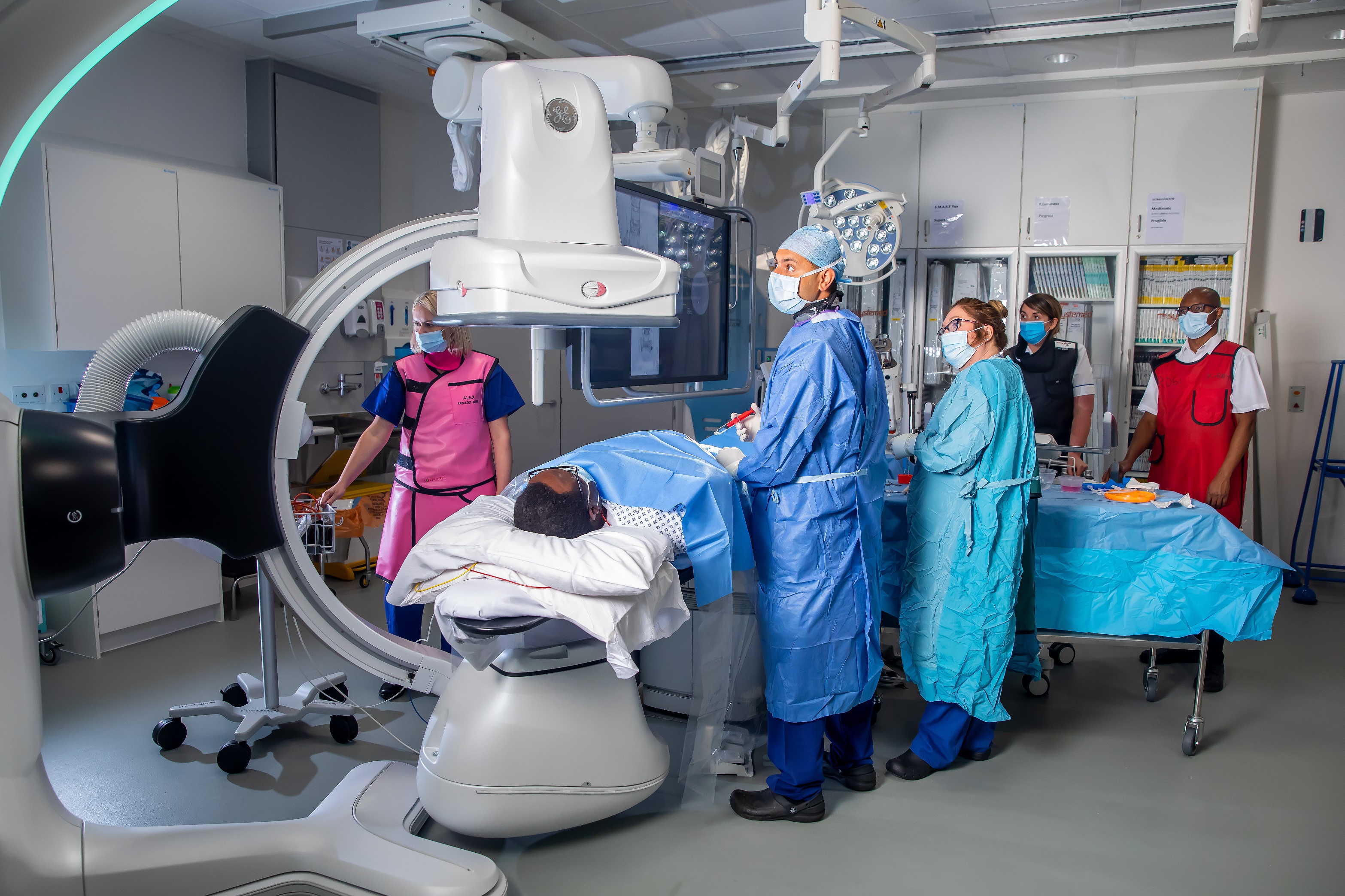Providing information, services & procedures in Interventional Radiology
Interventional Radiology (IR) is a little-known specialty which uses medical imaging technology to look inside the body and perform minimally invasive image guided procedures.
It’s often used as an alternative to traditional open surgery, as most IR procedures are performed under local anaesthetic or sedation, with virtually no scar and very rapid recovery.
Although the 1st IR procedure was performed in 1964 by Charles Dotter in the USA, expansion was limited by the slow processing of x-rays, but the advent of digital imaging and real-time x-ray acquisition, has resulted in rapid introduction of a huge range of IR procedures.
Tiny tubes & wires can be introduced into the body (often through the blood vessels used as a roadmap) and guided around under x-ray guidance, to get to any part of the body and deliver treatment.
Due to the specialised nature of IR procedures, most patients will see a traditional specialist first (surgeon, physician, oncologist etc), before being referred to Interventional Radiology.
Interventional Radiologists are specialists who first train to be radiologists to understand the imaging technologies such as Ultrasound, CT & X-ray and then undergo further training in minimally invasive procedures.
Not all hospitals offer the full range of IR procedures and some complex IR procedures will only be available at large, university teaching hospitals.
Interventional Radiologists sometimes work alongside traditional surgeons to offer intra-operative combined therapy to enable the best possible outcomes for patients.

What is Interventional Radiology?
Interventional Radiology uses imaging technology such as ultrasound, CT and x-rays to look inside the body whilst performing minimally invasive surgical techniques to treat and target disease.
Interventional Radiologists guide tiny catheters & wires through the body to get to sites of disease and perform a range of procedures such as killing cancer cells, blocking bleeding blood vessels, or unblocking organs such as the liver or kidney.
IR procedures are highly specialised, and patients are usually first seen by a traditional specialist such as a surgeon, physician, oncologist (cancer doctor) or gynaecologist before being referred to an Interventional Radiologist.
IR procedures can be divided into 6 broad categories as follows:
Vascular Intervention – Arterial
In this area of IR we uses the ARTERIES as roads to access any part of the body to perform minimally invasive image guided procedures.
Vascular Intervention – Venous
In this area of IR we uses the VEINS as roads to access any part of the body to perform minimally invasive image guided procedures.
Non-Vascular Intervention
In this area of IR we perform minimally invasive procedures on various organs throughout the body.
Interventional Oncology
In this area of IR we treat cancer using a variety of minimally invasive image guided procedures.
US & CT Guided Intervention
In this area of IR we use ultrasound and CT scanners to perform minimally invasive image guided procedures.
Neuro-Intervention
In this area of IR we treat conditions relating to the brain & spine.
IR Resources
Our comprehensive suite of professional services caters to a diverse clientele, ranging from homeowners to commercial developers.
www.tirtl.co.uk
- Keep a logbook of IR procedures.
- Learn how to take consent for IR procedures.
- Download your lists of cases as CSV or PDF files.

The MIRS Course
- Annual course for doctors training in IR.
- Hands on practical stations with models & simulators.
- Industry sponsored with experienced Consultant faculty.


